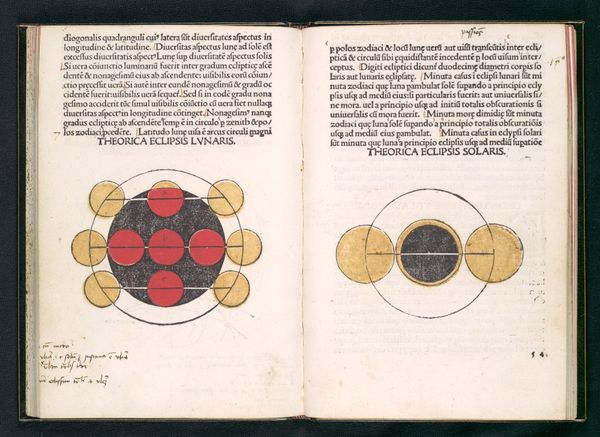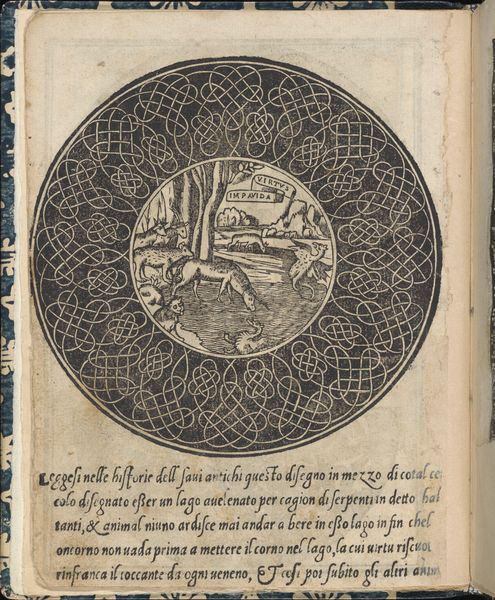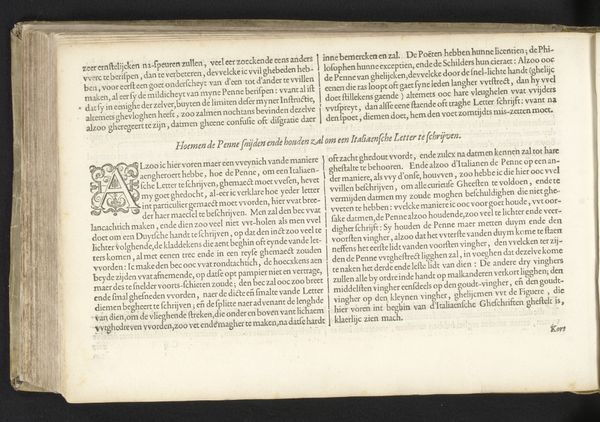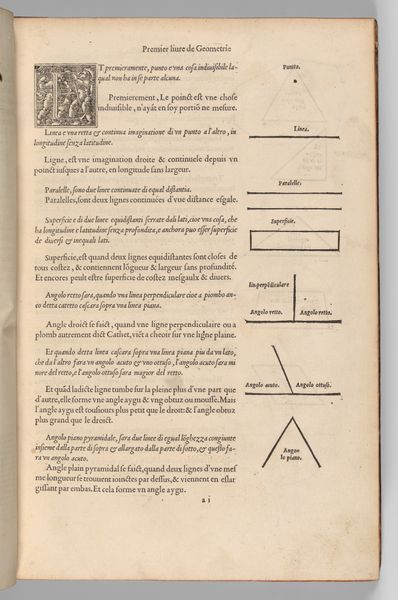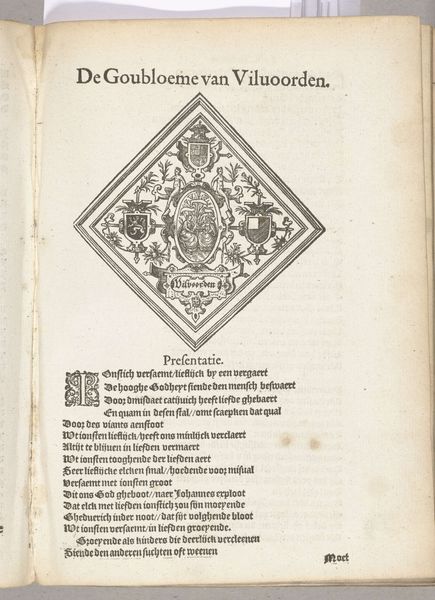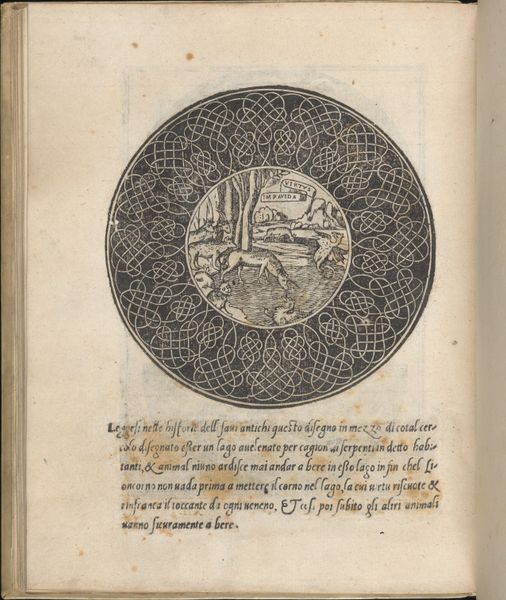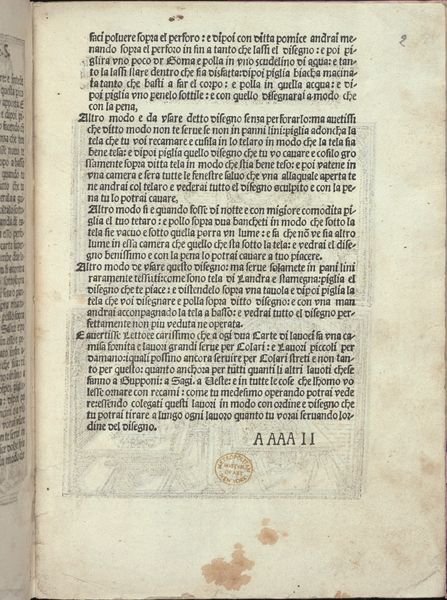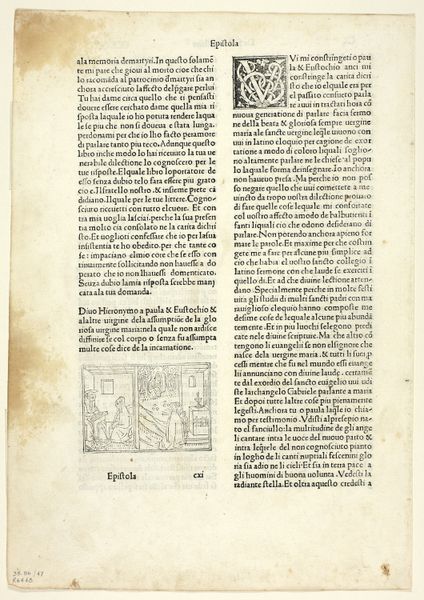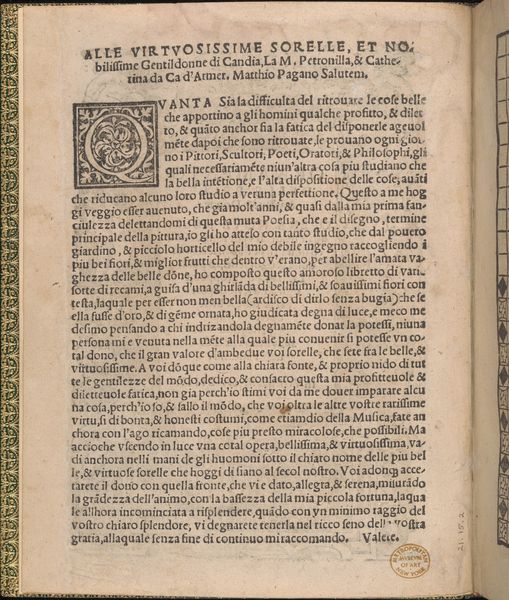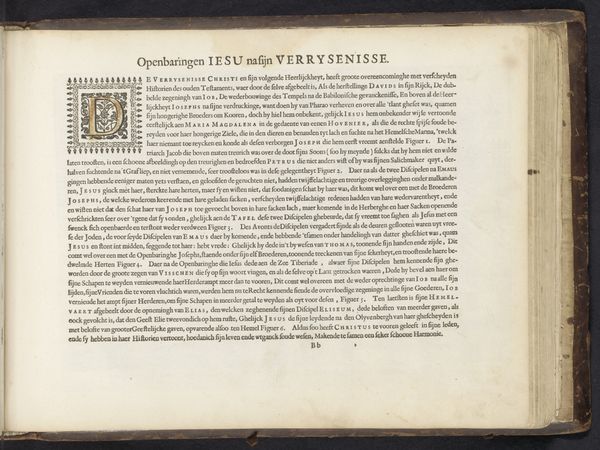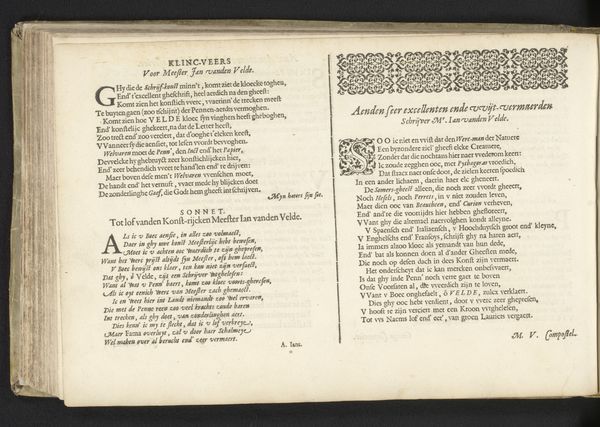
drawing, paper, ink
#
drawing
#
aged paper
#
hand-lettering
#
hand drawn type
#
hand lettering
#
paper
#
form
#
text
#
11_renaissance
#
personal sketchbook
#
ink
#
journal
#
fading type
#
geometric
#
men
#
line
#
handwritten font
#
academic-art
#
historical font
#
columned text
Copyright: Public domain
Curator: Ah, what a fantastic opportunity to discuss Albrecht Dürer's *Treatise on Measurement*. This drawing, dating back to 1525, is currently housed at the Metropolitan Museum of Art. It's primarily ink on paper, offering a glimpse into Dürer's exploration of geometric forms. Editor: It has a kind of hypnotic, swirling energy, doesn't it? Despite being lines on aged paper, it feels so dynamic. The spiral almost seems to pull you in. What’s the purpose of these diagrams, do you know? Curator: The purpose here transcends mere aesthetics. This is Dürer working as an iconographer. Notice how he renders both hand-lettering and geometric shapes. Dürer’s drawing reflects the Renaissance interest in ideal forms and proportions but is deeply rooted in medieval practices that infused geometric shapes with philosophical, cultural and spiritual value. Editor: I see it, particularly that hand-lettering woven in. How fascinating to consider the intersection of mathematics and artistic expression in early 16th century cultural life. How would the political forces of that time impact something as supposedly pure as math and art? Curator: Dürer sought to systematize artistic practice and elevate it as a legitimate intellectual pursuit. The work reflects his humanist ideals of empowering artists through theoretical knowledge. And like other renaissance artists, he used drawing for philosophical, scientific and symbolic investigations into man’s place in the world. Editor: The spiraling shape carries echoes, doesn’t it, of cosmological diagrams, alchemical symbolism... Even today, we intuit that there's "more" to such forms. Curator: Absolutely! The spiral itself is a symbol laden with layers of meaning, from growth and expansion to cyclical time and spiritual journeys. Even the specific rendering connects us back through the ages, reflecting a collective history. It really illuminates how our past persists visually and conceptually. Editor: Considering the sociopolitical implications really changes my perception of the work. Instead of just lines, it becomes an emblem of artistic ambition within the framework of that time, a true visual bridge to cultural memory. Curator: Precisely! This exploration highlights not only his creative vision but also the broader societal context that fueled his artistic aspirations and that shapes our contemporary reaction.
Comments
No comments
Be the first to comment and join the conversation on the ultimate creative platform.
